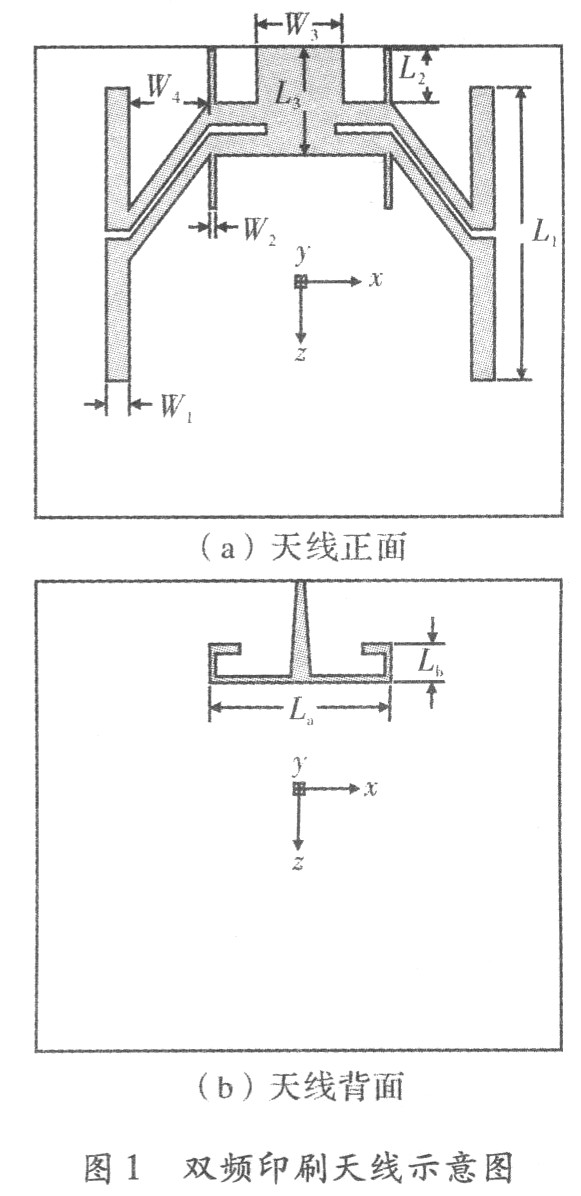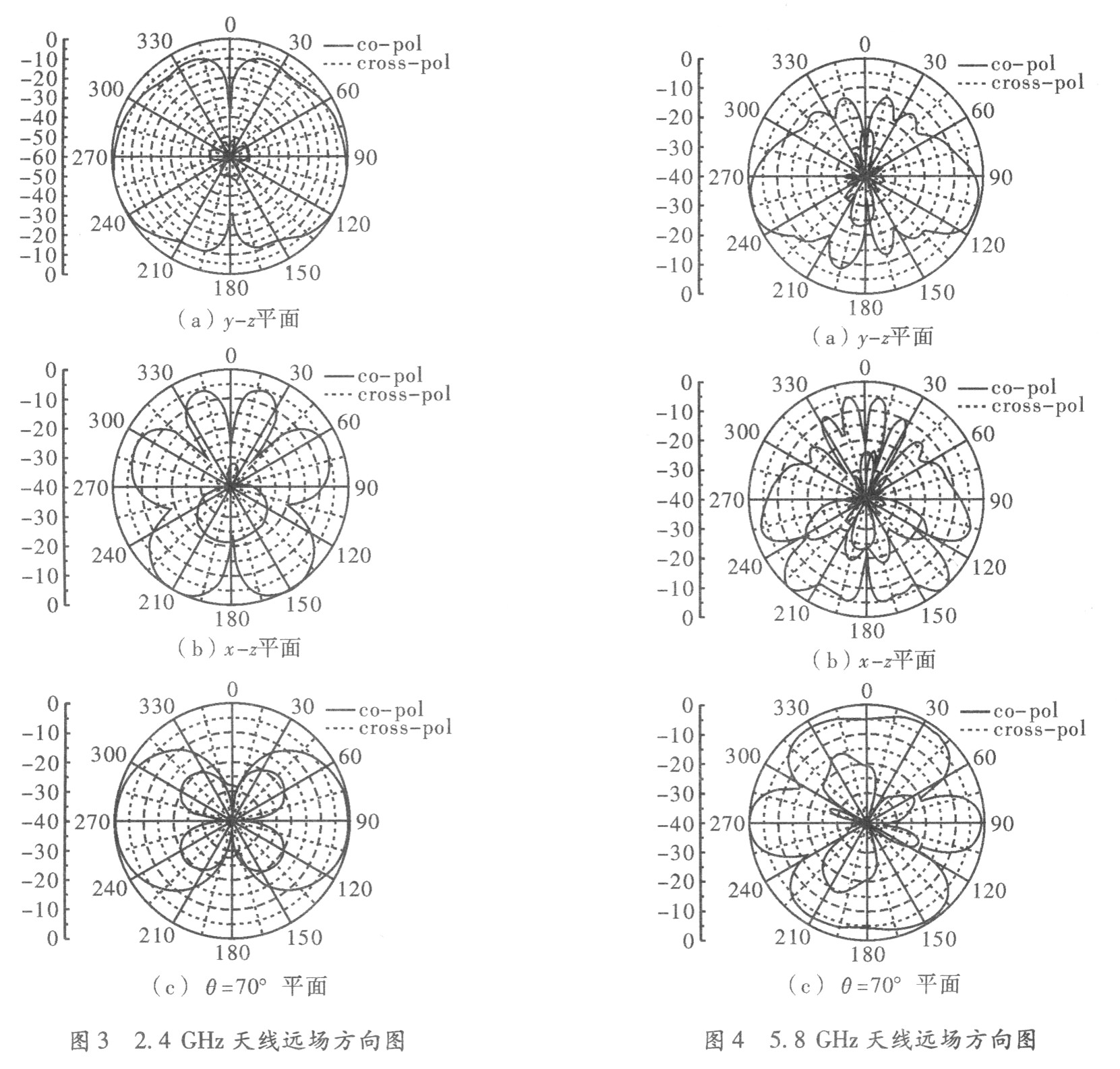Design of WLAN dual frequency printed antenna
Abstract: A dual-band antenna designed for 2.4 GHz and 5.8 GHz wireless LAN is designed. The antenna is made up of 4 printed dipoles that form two pairs of arrays, and each pair of arrays works at its own resonant frequency to achieve dual frequency. A balun is printed on the back of the dielectric board for coupled feeding. The antenna has the advantages of simple structure, small size, light weight, low cost, and easy integration, and is suitable for wireless local area network systems.
Keywords: wireless local area network; dual frequency antenna; printed dipole
The wireless local area network is a technology that uses wireless technology to achieve Ethernet access, and is a product of the combination of computer networks and wireless communication technologies. Compared with the wired network, the main advantage of the wireless LAN is that it can be moved and can be accessed without cables. Wireless LAN also has shortcomings such as signal interference. The current wireless LAN standards are mainly: IEEE 802.11a (5.15 to 5.35 / 5.47 to 5.725 / 5.725 to 5.875 GHz), IEEE 802.1lb and 802.1lg (2. 4-2. 5 GHz). WLAN antenna is a key component in a wireless local area network communication system, and its performance directly affects the quality of wireless communication. Extensive research has been conducted on WLAN antennas at home and abroad, and many antennas working in dual frequency bands have been proposed, such as dipole antenna (Dipole Anten-na), PIFA antenna (Planar Inverted-F Antenna), and planar monopole antenna ( Planarl Monopole Antenna), Quai-Yagi antenna, etc. These antennas are simple in structure and low in manufacturing cost, so they are very suitable for WLAN devices.
A printed dipole antenna suitable for WLAN system is designed in this paper. It is made by printing on FR4 media board, the size is 90 mm × 80 mm.
1 Antenna structure The design of the dual-band antenna structure, as shown in Figure 1.

The antenna is placed horizontally on the xz plane. In Figure 1 (a), the gray part is the antenna radiation part, and the white part is the medium. In Figure 1 (b), the gray part is the balun feeder, and the white part is the medium. The antenna consists of a dipole array, and the vibrator is printed on a dielectric board with a relative dielectric constant of 4.4 and a thickness of 0.8 mm. The length of the dipole is related to the resonant frequency. The long oscillator corresponds to the low-end frequency band, and the short oscillator corresponds to the high-end frequency band. Therefore, the antenna can work in the dual frequency band of 2.4 / 5.8 GHz. Commonly used designs use half-wavelength or 1/4 wavelength as the length of the antenna.
After modeling and simulation optimization in Ansoft HFSS, the structure size (unit: mm) of the antenna is: W1 = 4, W2 = 1, W3 = 7.4, W4 = 7, Ll = 49, L2 = 9 , L3 = 18.5, La = 15.5, Lb = 5.
2 Simulation results The simulation results of the antenna standing wave are shown in Figure 2. The antenna resonates at 2.4 GHz and 5.8 GHz to achieve dual frequency operation. The low-end frequency band (standing wave <2) is 2.35-2.47 GHz, and the bandwidth is about 120 MHz, covering the IEEE802.1lb / g working frequency band; the high-end frequency band is 5.56-6.07 GHz, and the bandwidth is about It is 510 MHz and covers the working frequency band of IEEE802.11 a.

The antenna pattern is shown in Figure 3.

It can be seen from the directional diagram that the beam of the antenna in the y ~ z plane has dual directivity, the main polarization is good, and the cross polarization is small.
Compared with the quasi-Yagi antennas in the literature, the directional pattern has dual directivity, which can meet some applications that require beam pointing.
3 In the conclusion, a WIAN dual-frequency dipole printed antenna is designed. Through the simulation and optimization of the dual-frequency printed antenna, the working frequency band of the WLAN standard is realized. The directional pattern has a certain directivity, which is suitable for the beam pointing. Required applications. The antenna is small in size and easy to integrate; it has good performance and meets the requirements of wireless LAN communication applications.
Guangzhou Ehang Electronic Co., Ltd. , https://www.ehangmobile.com
